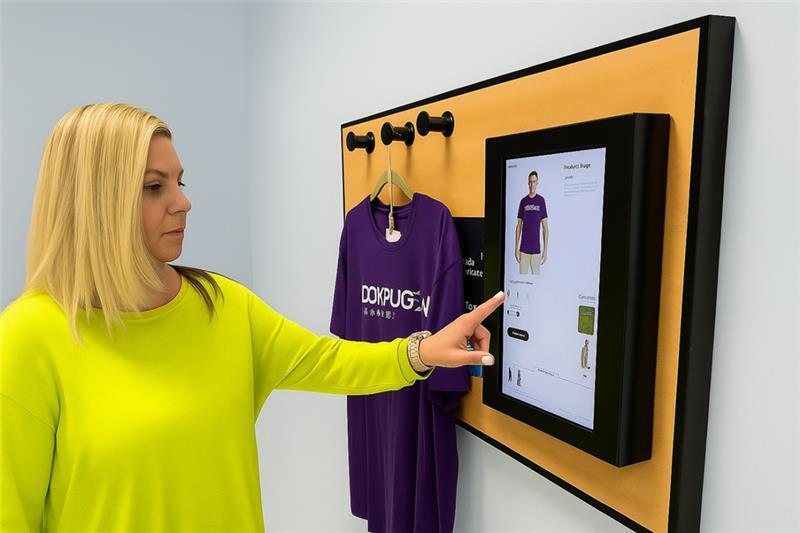After decades of hype cycles, Radio Frequency Identification (RFID) technology is finally securing its place as a mainstay component of retail technology stack.
Fashion + Apparel’s Super Tech
After decades of hype cycles, Radio Frequency Identification (RFID) technology is finally securing its place as a mainstay component of retail technology stack. By embedding miniature tags into product labels, stickers, or hang-tags, the technology gives retailers unprecedented visibility, transforming supply chain management, omnichannel inventory, in-store experiences, loss prevention and product lifecycle management. Adoption is now so widespread that what was once a niche differentiator used by a few forward-looking retailers, has become operational table stakes. In fashion and apparel sectors especially, retailers not leveraging RFID risk being left behind.
Today, most major apparel brands — lululemon, Decathlon, Adidas, Nike, Uniqlo — embed RFID directly into their labels. The “RFID inside” icon on a hang-tag is no longer rare; it’s the norm. According to Accenture, 95% of fashion brands are already using or actively exploring RFID, and more than 60% believe no other technology can replicate the benefits it delivers.
.jpeg?width=1200&height=684&name=shared%20image%20(1).jpeg)
This little "RFID Inside' symbol denotes that the garment is tagged with RRFID-enabled label or tag.
Beyond Supply Chain: RFID in the Store
While supply chain visibility and item-level inventory accuracy remain the foundation of RFID adoption, fashion and apparel retailers are also pushing the boundaries of what RFID can do. In-store experiences, checkout, and loss prevention are becoming equally important drivers of investment.
Smart Fitting Rooms
In the fitting room, RFID paired with software from innovators like CRAVE Retail enables smart change rooms which recognize garments as soon as they are brought inside. Using an interactive display, shoppers can browse available sizes, colours, or style pairings and request assistance, while store associates receive alerts on mobile devices.

2: CRAVE Retail's Smart Fitting Room solution uses RFID to increase converstion rates and transform shopper experience in the fitting roms.
Beyond customer engagement, this solution delivers a new layer of analytics, capturing data on items tried on but not purchased. Much like online “cart abandonment,” this insight was previously unavailable to brick-and-mortar stores and is now a powerful tool for merchandising and assortment planning. Retailers can use this feedback loop to refine future collections, identify gaps in sizing or style, and even make smarter sustainability decisions by reducing overproduction of items that consistently stall in fitting rooms.
Faster Checkout
At checkout, RFID delivers speed and convenience. Retailers such as Uniqlo and Decathlon already use RFID-enabled point of sale to eliminate the need for manual scanning. Using hidden under-the-counter antennas and readers, items brought to the checkout are automatically read and tallied, making the process up to ten times faster than traditional barcode-based checkout. The result: a near-frictionless customer experience.
That time saved is more than just a convenience; it directly impacts sales. Shorter lines reduce customer walkouts and make it easier for shoppers to add last-minute items without worrying about delays. For busy urban locations, the ability to serve more customers in less time has a measurable impact on revenue and brand loyalty.
Smarter Loss Prevention
For loss prevention, RFID offers a step change in visibility. Unlike traditional electronic article surveillance (EAS) tags or camera systems, each RFID-tagged item carries a unique electronic product code (EPC) identifier (like a serial number) that can be tracked across its journey. Shrink events, whether due to theft, misplacement, or fraudulent returns, can be tied to specific products, times, and locations. This precision enables faster investigations, stronger controls, and ultimately better protection of margins.
What’s Next?
With most fashion retailers already using RFID in some capacity, the next frontier is achieving integration between all systems accessing RFID data. The real value will come when applications, from supply chain to fitting room to checkout and loss prevention, are connected into a unified ecosystem.
When systems share data and the full product journey can be tracked from factory to consumer, retailers will achieve a complete, real-time view of the product lifecycle. This will enable greater efficiency, deeper insight, and stronger customer experiences that set retailers apart. And as retail leaders are learning from both physical and digital fronts — whether it’s RFID guarding against shrink or the rise in cyberattacks disrupting store operations — resilience has become the defining requirement. We explored this in Retail Cyber Breach isn’t a What-If — It’s a When, showing how cyber resilience complements physical innovations like RFID.
The Future of Fashion Retail Runs on RFID
RFID in retail apparel is no longer optional. It is the foundation for how leading fashion brands run their operations today and how they’ll compete tomorrow. Talk to Compugen’s retail technology experts to learn how we can help you design, integrate, and scale RFID solutions that deliver measurable outcomes for your business.






.png)